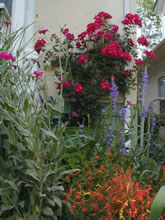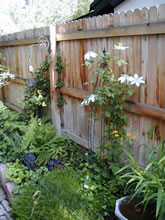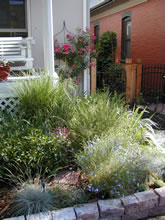Ways in which Content Creation is like Gardening
 A few years ago I read a book by Paul Hawken entitled “Growing A Business”, in which he presented his opinions on how best to define a business strategy; as one of the founders of Smith and Hawken, he has a unique perspective based in personal passion and understanding. As I remember, one of his key points is the importance of going with what you know; by choosing an approach that resonates with yourself, you are more likely to connect with others as well.
A few years ago I read a book by Paul Hawken entitled “Growing A Business”, in which he presented his opinions on how best to define a business strategy; as one of the founders of Smith and Hawken, he has a unique perspective based in personal passion and understanding. As I remember, one of his key points is the importance of going with what you know; by choosing an approach that resonates with yourself, you are more likely to connect with others as well.
As a proponent of user-centered design strategies, I find myself asking my clients to walk in their customer’s shoes; often this involves looking outside your organizational structure and taking a look at the experience through fresh eyes. Experience research and prototype testing can help in getting to an optimal approach, but inevitably the content question comes up: where should we put our energies in creating a communications plan to best address the needs of our target audience while working within our limitations as an organization?
As an gardener, I have found myself considering the relationship between the desire to create something wonderful and the need to build a sustainable solution; how do you create a garden (or a website, for that matter) that looks great now, but will also have interest in all seasons and through the years?
And so, I offer the following suggestions for gardeners and businesses:
Work with the Existing Landscape
As you think about what you want to do, spend time considering the existing landscape. What elements do you like? What would you like to highlight? What do you want to change? In business as in nature, there are certain parts of the landscape that provide the basis for everything that follows. Spend some time considering how best to integrate these elements into your plan for change. Don’t be too quick to decide what the best approach is, or you may find yourself boxed into a corner.
 Plan for Use
Plan for Use
Perhaps the most important decision you will make is how the various areas of your landscape will be used; who will be visiting, and what will they be doing there? If you are expecting a crowd, don’t create a narrow path. Be sure that the thoroughfares are well-defined and any plantings there can withstand the traffic.
Remember your Particular Environment
There are numerous environmental factors that impact the success or failure of your plan; focusing on appropriate solutions will greatly enhance your potential. In the case of a garden, this might involve looking at the weather, the soil, or the amount of sun, in business you need to understand your business environment, your customers, and your message. A gaudy pink flower might be appropriate in one situation, and not in another.
Think Long Term…
A communications strategy, like a garden, is a project that is never finished – it takes a level of faith and trust to begin a project that may take years to reach fruition. Starting a project with a single season in mind is a waste of time, effort, and money.
…but set Achievable Goals
But you can’t do it all at once, so you have to break your project up into manageable chunks. What is the best project to take on this year, and how will it fit in to what I’m going to do next year? Look at the amount of resource you have to apply to the project, consider the benefits, and then make your decision on what you can realistically accomplish.
Choose Maintainable Approaches
In building for the future, you have to consider how maintenance and updates will fit into your plans; you don’t want to put your efforts into solutions that will only work for a short period of time. In the case of a garden, there are structural enhancements that will make your life easier in the long run, though they will increase the cost up front. The same applies to content development.
 Prepare the Soil
Prepare the Soil
Any gardener will tell you that it’s easy to put plants in the ground; what takes time is everything surrounding the planting; you have to turn the soil, amend and fertilize, build the beds… Though this takes time, it separates those who take their project seriously from those who just want to put some flowers in the ground.
Learn to Love Chores
And even after the plants get in the ground (or your new website hits the Internet) there is always more to be done. Weeding, cleaning up after storms, preparing for winter, preparing for spring, if you aren’t willing to do the necessary chores you are going to end up with more of a mess than you hoped for.
Plant for the Whole Year-Round
What happens when the bloom is off the rose? When the snow hits the ground? Many flowers bloom for only a short time, and if you take a limited approach you’ll come to a time when the landscape seems unnecessarily barren. Consider options that add year-round appeal, and focus more on the leaf than the bloom. You may not have the big splash in the spring, but you’ll be happier when the autumn comes.